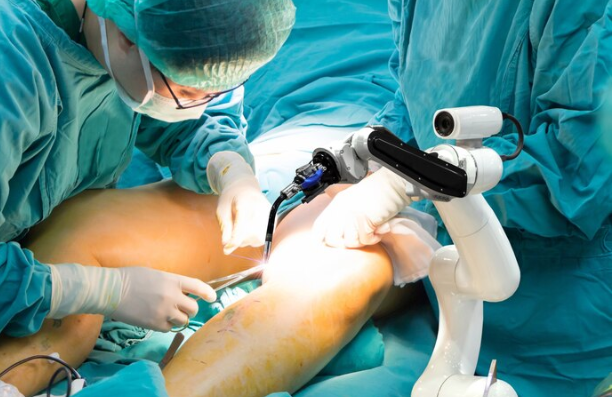With its revolutionary treatment options for a broad range of vascular diseases, vascular surgery is a fundamental component of contemporary healthcare. Venous insufficiency, aneurysms, or blocked arteries can all be treated with vascular surgery, which can be incredibly successful in reestablishing healthy blood flow and averting potentially fatal consequences. Vascular surgeons are leading the way in treating conditions that impact millions of people, from highly complex open surgeries to cutting-edge minimally invasive techniques.
The Science of Vascular Surgery: Accuracy in Each Operation
Diseases of the blood vessels, the complex system that transports oxygenated blood throughout the body, are the specialty of vascular surgeons. When it comes to vascular problems, the stakes are high. Debilitating consequences like strokes, heart attacks, or even amputations can result from conditions like aneurysms, peripheral artery disease (PAD), and carotid artery disease. Vascular surgery has, however, advanced dramatically over time, enabling surgeons to act quickly and help avert serious consequences.
To prevent strokes, carotid endarterectomy, for example, is a common procedure used to remove plaque buildup from the carotid arteries. Surprisingly, this procedure, which formerly necessitated lengthy hospital stays, now makes use of state-of-the-art technologies to improve patient comfort and reduce recovery times. Similar to this, carotid angioplasty and stenting is a minimally invasive procedure that offers patients a noticeably quicker recovery than traditional surgeries by restoring blood flow using balloons and stents.
| Procedure | Description |
|---|---|
| Carotid Endarterectomy | Removes plaque from carotid arteries to reduce the risk of stroke |
| Peripheral Angioplasty | Opens blocked arteries to improve blood flow and relieve pain |
| Endovenous Thermal Ablation | Uses heat to close diseased veins and improve circulation |
| Sclerotherapy | Injects a chemical solution to treat varicose veins and spider veins |
| Aneurysm Repair | Repairs aneurysms to prevent rupture and protect vital blood vessels |
| Bypass Surgery | Creates new pathways for blood to flow around blocked veins |
Numerous Vascular Surgical Techniques
A wide range of procedures aimed at treating blood vessel disorders with an emphasis on reestablishing normal blood flow are included in vascular surgery. Let’s examine a few of the best practices currently in use:
- By improving blood flow to the brain, carotid endarterectomy dramatically lowers the risk of stroke by clearing plaque accumulation from the carotid arteries.
- Peripheral angioplasty is a common treatment for peripheral artery disease (PAD). It clears clogged arteries, reducing pain and promoting better leg wound healing.
- Endovenous Thermal Ablation: This minimally invasive procedure is a far less painful alternative to traditional vein stripping surgeries for patients with varicose veins. It uses heat to seal off damaged veins.
- Sclerotherapy: A chemical solution is injected into smaller varicose or spider veins, causing them to collapse and be absorbed by the body. This procedure is very effective at decreasing visible veins and increasing circulation.
Using cutting-edge technology, vascular surgeons also operate on aneurysms, venous disease, and blood clots to enhance patient outcomes and shorten hospital stays. The variety of these operations demonstrates how vascular surgery can be used to treat a wide range of vascular disorders.
How Vascular Surgery Is Transforming the Medical Field
Vascular surgery has advanced significantly in terms of minimally invasive techniques over the years, providing patients with a much more comfortable and expedited recovery experience than in the past. For instance, the treatment of vascular diseases has been completely transformed by endovascular surgery, a procedure that uses catheters and other devices placed into blood vessels. These operations are significantly less invasive, resulting in smaller wounds and significantly faster recovery periods for patients.
The application of robotic technology is among the most inventive developments in vascular surgery. Surgeons can perform even less invasive procedures thanks to robotic-assisted surgery’s unparalleled precision, which also ensures the best possible outcomes for patients. Skilled surgeons can operate robotic systems remotely, which improves their capacity to precisely navigate intricate blood vessels.
When Is the Right Time for Vascular Surgery?
A vascular problem, such as PAD or venous insufficiency, may be the cause of your chronic leg pain, swelling, or numbness. Additionally, you are more likely to develop vascular conditions if you have a history of smoking, diabetes, or high blood pressure. Consulting a vascular surgeon can significantly lower your risk of serious complications, and early detection and intervention are essential.
The following are typical indicators that you should see a vascular surgeon:
- Leg pain or cramping, particularly when walking
- swollen feet or legs
- wounds or ulcers that don’t heal, especially on the lower limbs
- Past cardiac conditions or strokes
- Pain in the chest when exerting oneself, like when exercising
You can improve your quality of life and greatly lower your risk of complications like stroke, heart attack, or leg amputation by getting treatment early.
Vascular Surgery’s Future: A Look Ahead
Vascular surgery has an extremely exciting future. The field will likely become even more effective and patient-friendly as robotic surgery, AI-driven diagnostics, and minimally invasive procedures continue to advance. These days, surgeons can execute intricate procedures with amazing accuracy, which improves long-term results, speeds up recovery, and reduces complications.
Furthermore, new technologies and treatments will revolutionize the diagnosis and treatment of vascular conditions as medical research advances. Vascular surgery has a bright future ahead of it, with safer operations, faster recovery times, and improved overall care for patients guaranteed.
In the treatment of blood vessel disorders, vascular surgery is essential because it can save lives and improve patients’ quality of life. Vascular surgery appears to have a very bright future thanks to technological advancements and minimally invasive techniques, which will provide better patient outcomes, shorter recovery times, and less invasive options. Do not hesitate to consult with a qualified vascular surgeon right now if you are at risk for vascular disease. You can guarantee a healthier future by being proactive.


